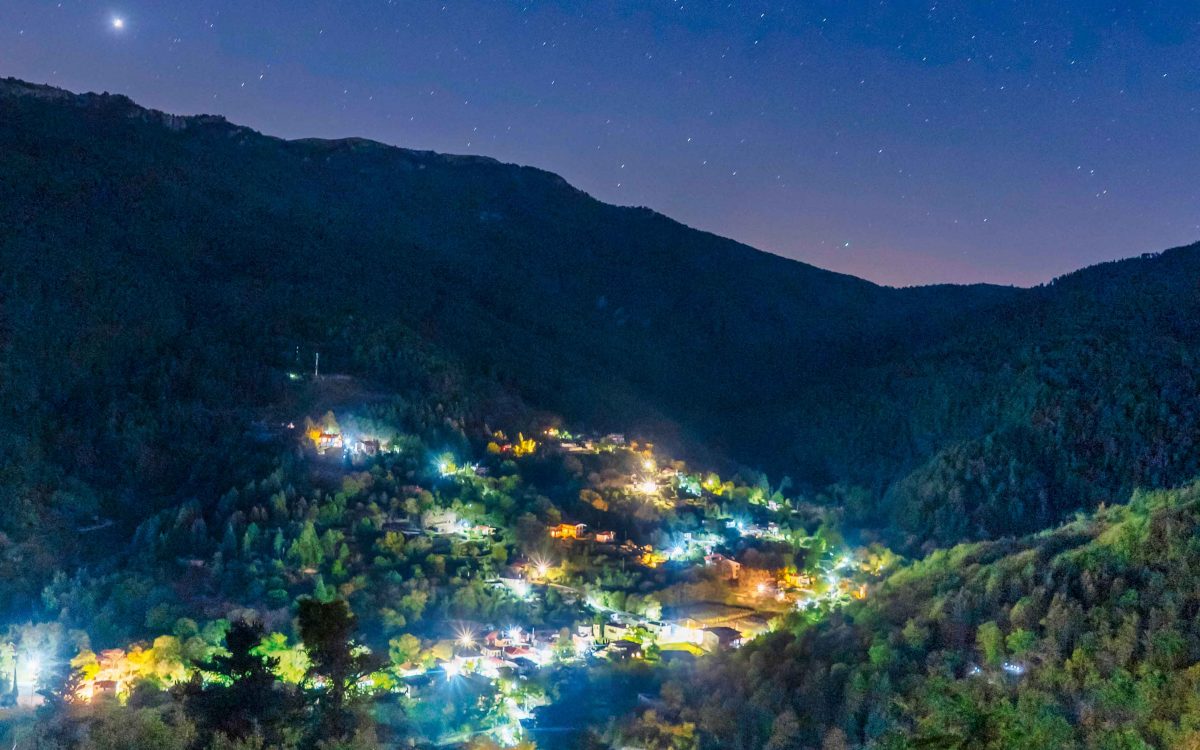Just two and a half hours from Athens, Achaia, in the northern part of the Peloponnese, combines mountains with sea. However, nothing foretells what the traveler will face when leaving behind the Corinthian Gulf to ascend the winding roads of the prefecture, to be led to the places that gave birth to passionate romances and heroic figures of the Greek Revolution. We visited Kloukinohoria, a cluster of small stone settlements, below the peak of Helmos, in the heart of the mountains of Achaia, to look for mushrooms and discovered the aromas of the land and its fruits. We were fascinated by the particular physiognomy of the landscape, we were drawn into worlds of other times that took us centuries back and we left full of fascinating images, new friendships and positive energy.
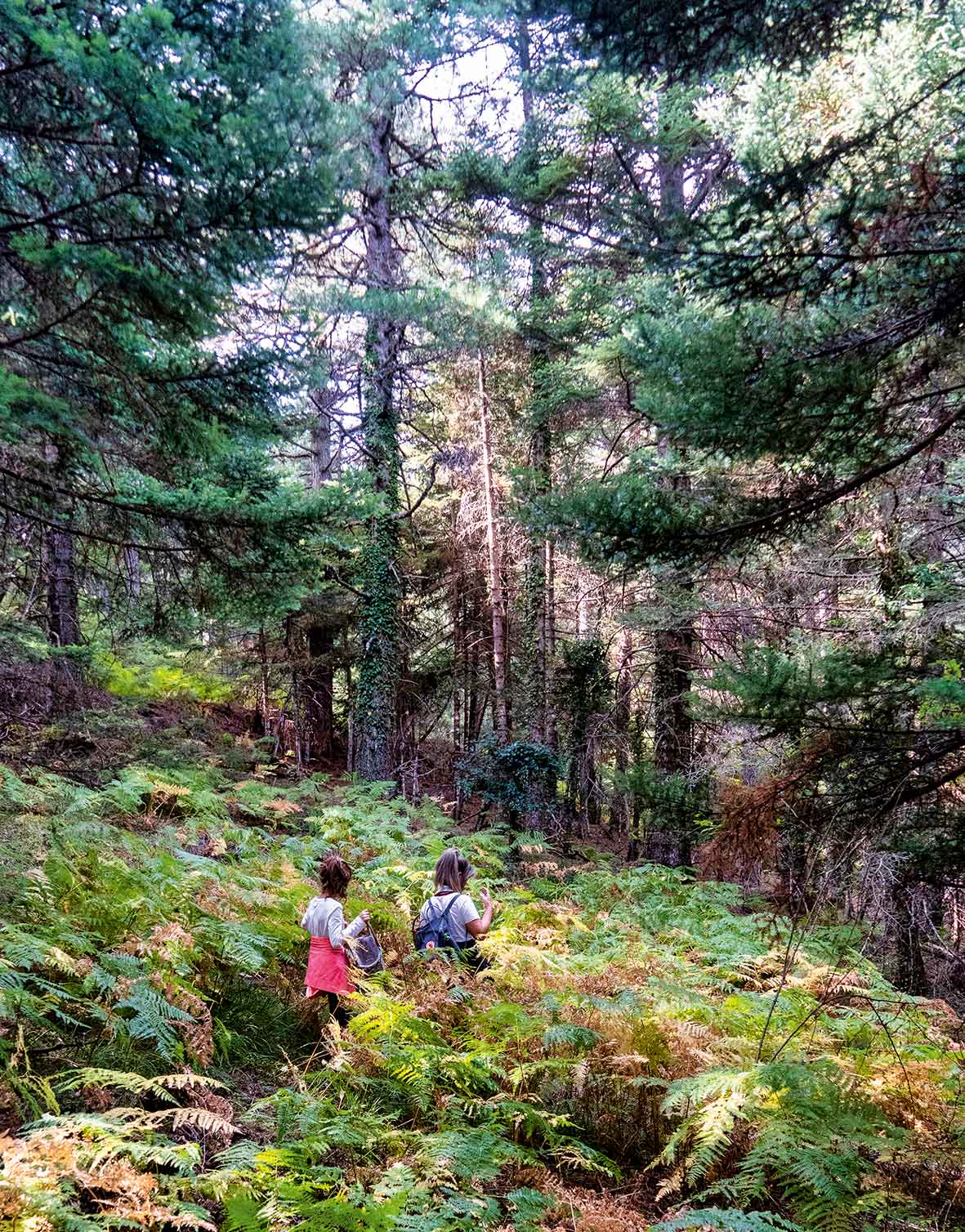
© Perikles Merakos
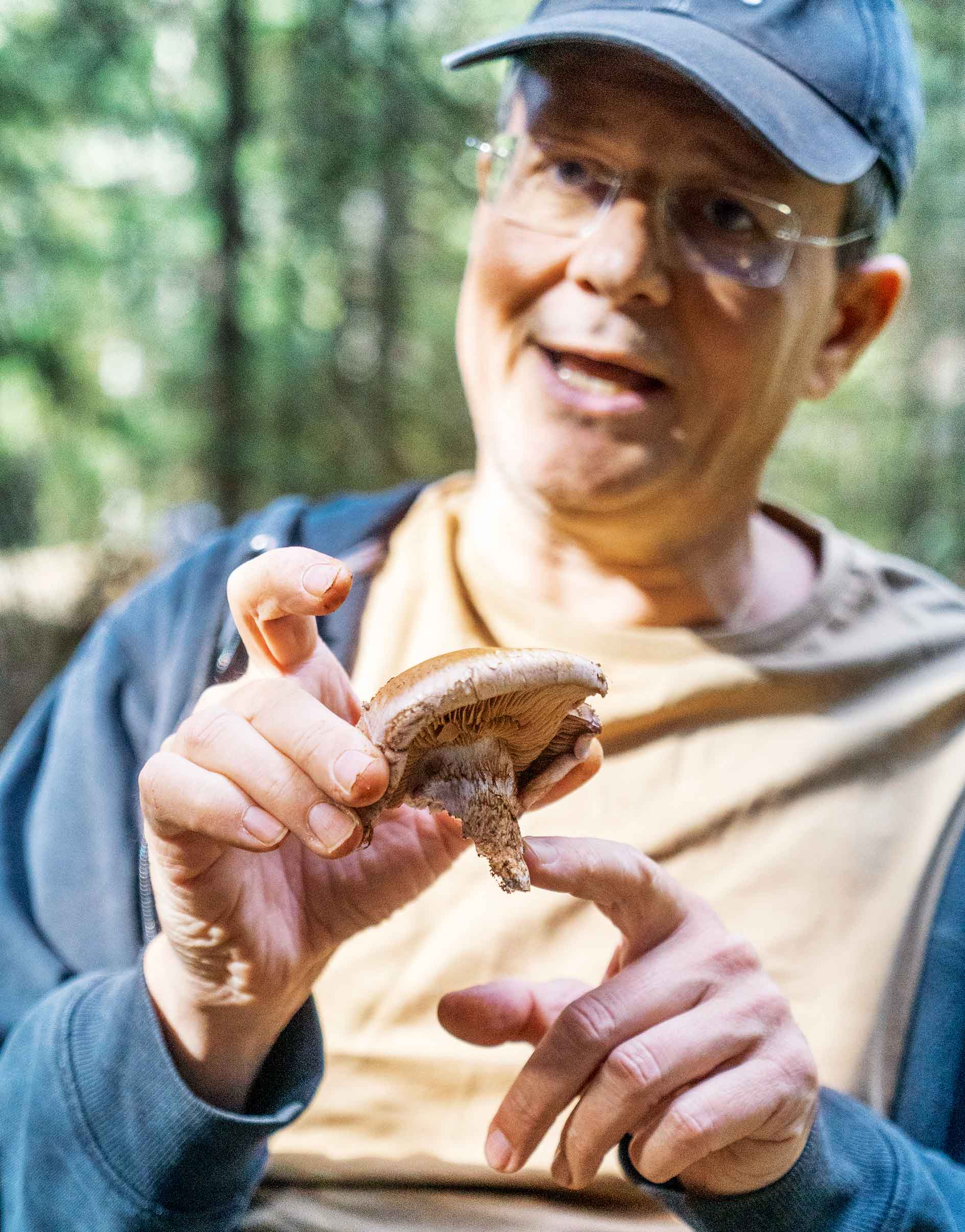
© Perikles Merakos
Mushroom hunting
Autumn is the season for picking mushrooms, as there is a wide variety of species. An experienced collector, however, can spot them all year round. And who wouldn’t want to be able to pick their own mushrooms and enjoy them freshly picked on their plate? In the forested areas of the mountains of Achaia there is quite a wide variety of edible mushrooms, but also very rare species, such as Pleurotus nebrodensis, which attract amateurs and professional foragers to the area. The first ones are advised not to go mushroom picking on their own, on the one hand because mushrooms play a key role in maintaining the ecological balance and must be protected and on the other hand because it is difficult to distinguish which ones are not edible. Another thing that would-be collectors need to know is that after a good rain it is necessary to wait two or three days before going into the forest – this time period can vary from region to region depending on the type of soil , the humidity level, etc., which determine the rate of mushroom growth.
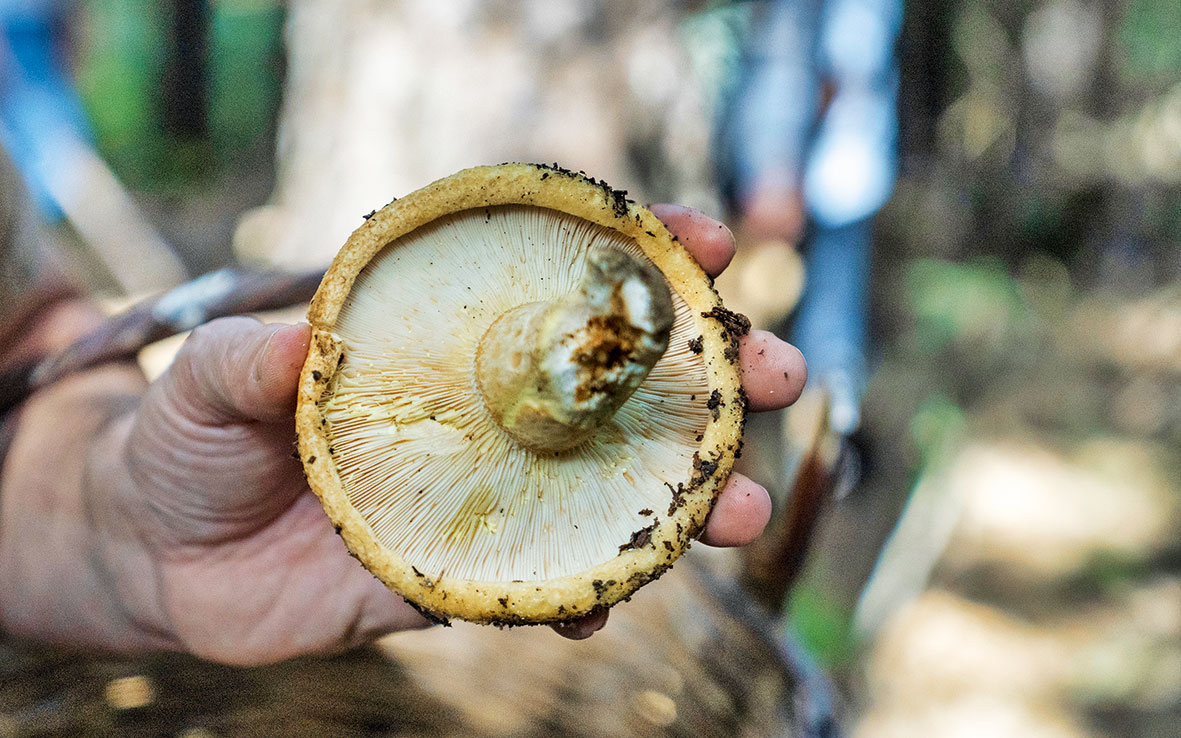
© Perikles Merakos
Tips for beginners
On the occasion of the 2nd Mushroom Festival, organized in the village of Aghia Varvara in Aegialeia on October 2nd and 3rd, we followed two mushroom excursions led by Nektarios Filippopoulos, founder of the “Mushroom Hunting” group and of Fungi Hellas, the first company that started twelve years ago to supply restaurants and the market in Greece and abroad, both with fresh wild mushrooms and with standard domestic mushroom products. Under the guidance of Nektarios, who grew up in the province of Aegialeia and learned about mushrooms from his father, we too got a small idea of how we should pick them responsibly and safely.
He advised us that it is better to keep a wicker basket while picking, so that the seeds from the mushrooms fall back to the ground. In case there is not any such basket available, he suggested we use paper bags, but in no case plastic ones, because mushrooms can be damaged in them. He also advised us to collect only the mushrooms we are interested in, by gently twisting them while holding their “cap,” so that they are severed from their mycelium. Lastly, he suggested that we cover the spot to prevent dehydration. He warned us to collect only what looks healthy and in good condition, not old mushrooms or those eaten by insects. He also told us that mushroom picking is allowed all year round but only up to three kilos per picker per day – unless one has a special license to trade. He warned us that even one poisonous mushroom is enough to infect everything we have in the basket and suggested that it is safer to follow an experienced mushroom picker, group or club.
After this mini-seminar, we hiked in the forest above the village of Solos, where we mainly spotted the species Lactarius deliciosus, Lactarius sanguifluus, Suillus sp. (a common mushroom that looks like a Boletus, thanks to which the natives survived during the Occupation), Chroogomphus rutilus, Amanita rubescens or Blusher (of the genus Amanita, which includes very dangerous mushrooms, therefore it must be collected by those with great experience; it is to be consumed only cooked, because it contains toxins that are destroyed at high temperatures), Lycoperdon (at an advanced stage of its development, when pressed, it throws its spores in the form of powder into the air), Ramaria botrytis, Oudemansiella melanotricha and Cortinarius (toxic genus, with a characteristic veil , like a curtain, hanging like a remnant from its lamellas).
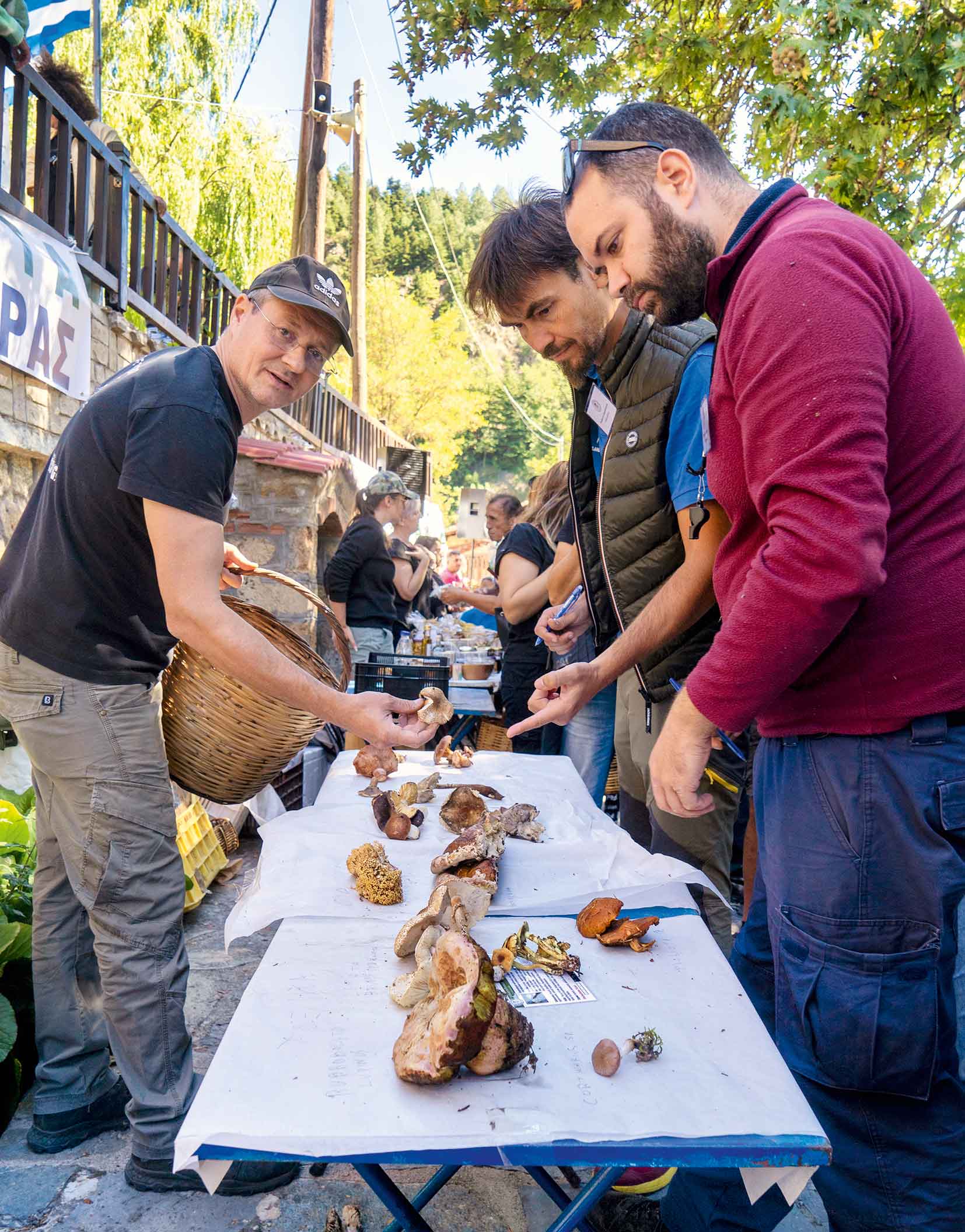
© Perikles Merakos
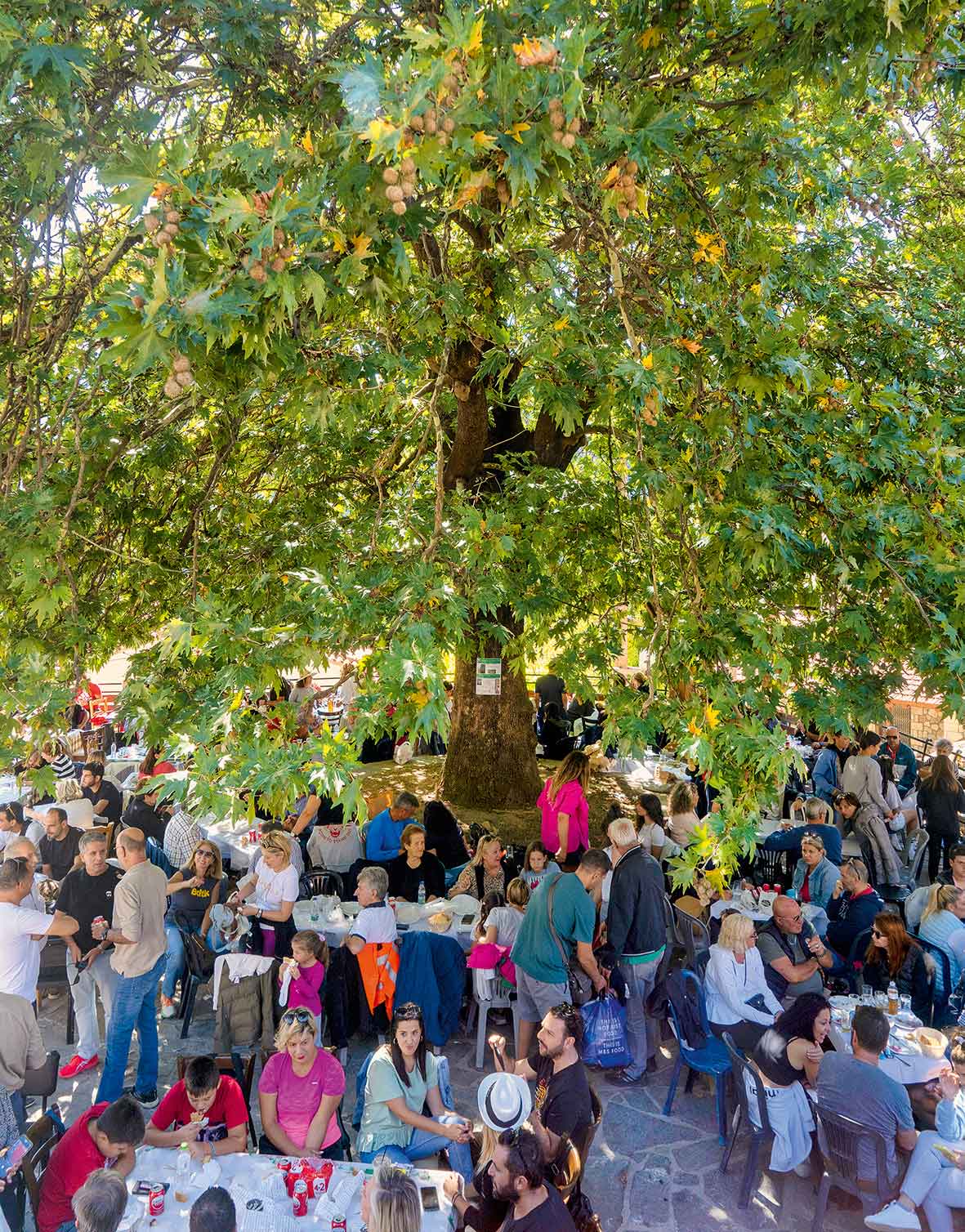
© Perikles Merakos
Cooking mushrooms at the festival
The stalls with local products, such as beans, nuts, hylopites (a type of pasta made from flour, eggs and milk), jams, honey, cheeses, and more, had been placed in the alley of Agia Varvara since Saturday. The producers were waiting for the visitors, who this year are estimated to have exceeded nine hundred. For the fifth year, the village has organized a hiking excursion and a celebration in the square, while since last year, mushroom picking and cooking with invited chefs have been added to the program. According to the president of the community of Aghia Varvara, Thanasis Xykas: “The goal of the celebration is to give the world an opportunity to get to know the rich nature of Nonakrida Achaia, to enliven our villages and let their history be heard and to give people the opportunity to visit the beautiful churches and the special landmarks of the area.”
On Sunday morning, the chefs took their places behind their pans and pots and eagerly awaited for the five groups of collectors to return from the mountains (about 250 people, including many children!) who had spread out in the Zarouchla fir forest. After the sorting of the mushrooms in the square of Aghia Varvara was completed, they were delivered to the chefs in order to prepare the food: scrambled eggs with wild mushrooms and truffle, orzo with wild mushrooms and grated fresh truffle by Nikos Zafeirakopoulos and a delicious mushroom soup with turmeric, sweet paprika, trachanas (a type of fermented cracked wheat) and butter by Elias Mamalakis.
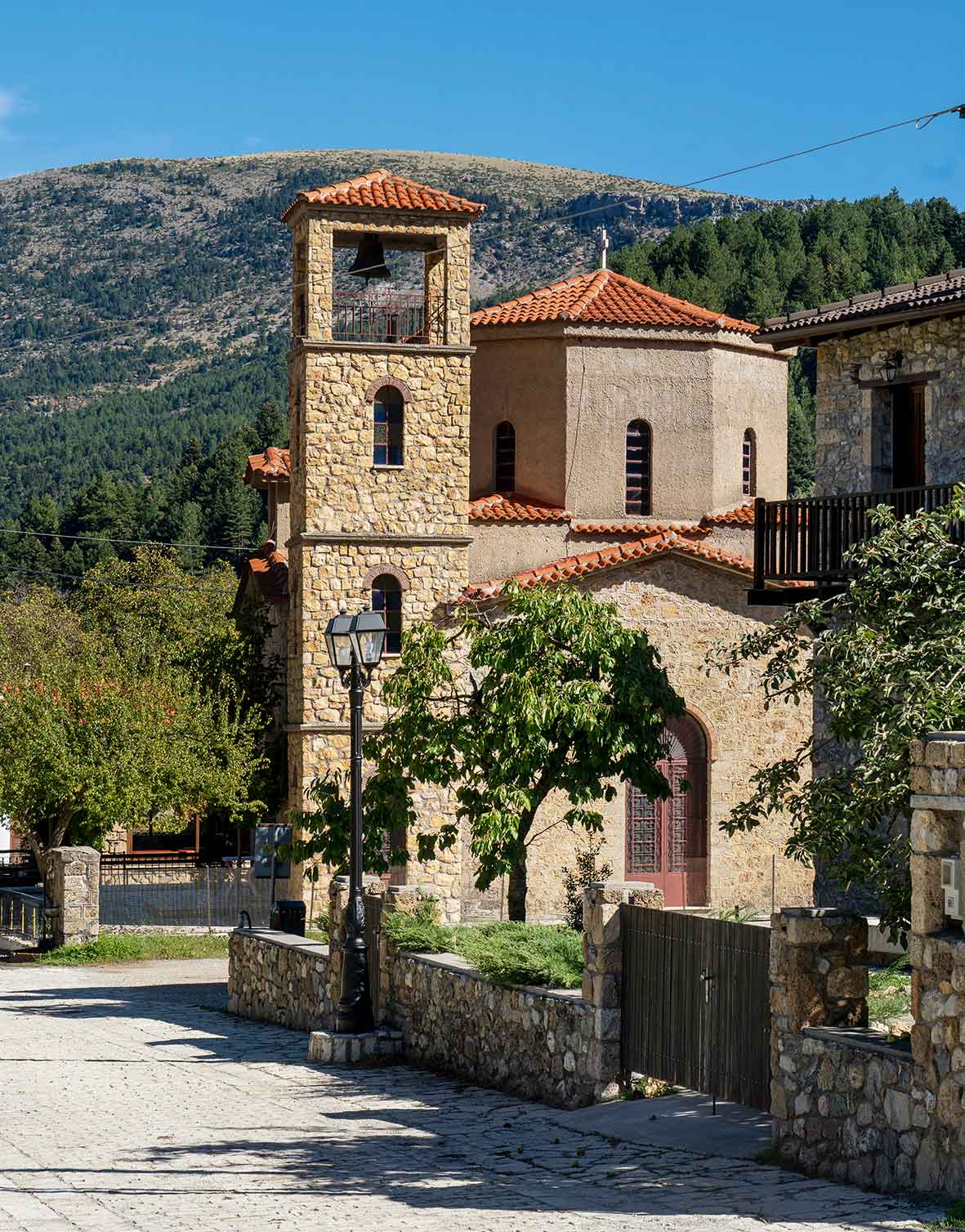
© Perikles Merakos
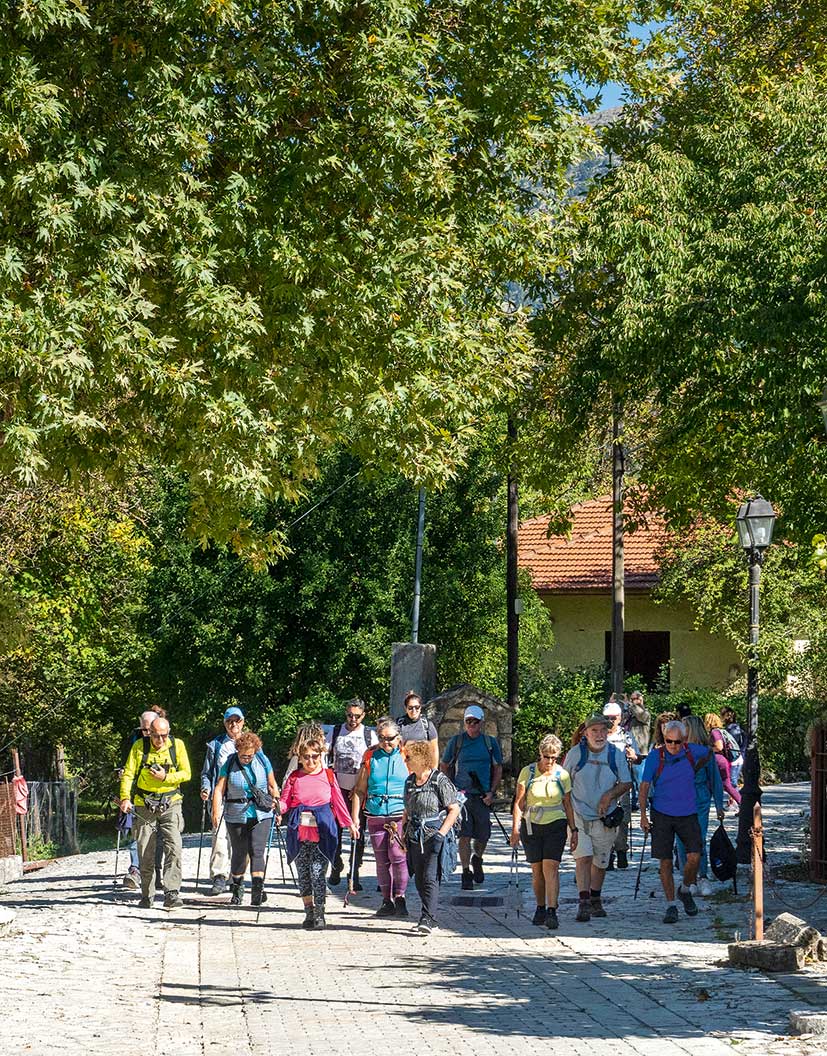
© Perikles Merakos
Zarouchla, where time has stopped
With the beautiful Zarouchla as our starting point, we toured the Kloukinohoria villages (or Klukines) ̶ as they were called during the rule of the Franks ̶ that had been granted as a fief to Antelm of Cluny, the first Roman Catholic Archbishop of Patra.
Built on the south-eastern slopes of Aroania, at an altitude of 1,100m, Zarouchla was the first seat of the newly founded municipality of Nonakrida, which was created in 1835 and also included the villages of Aghia Varvara, Agridi, Vounaki, Halkianika, Solos, Mesorrougi and Peristera.
The sun rises over the dense chestnut forest, while the stone church of Aghios Dimitrios at the entrance of the village preludes the beauties that the visitors are going to discover in this traditional settlement, which is located right next to Krathis river. Τhe village houses as well as its guesthouses, tavernas, cafés and shops with local products are lined up along its central cobbled street.
A circular tour will reveal to you the creations of nature and of the people who are the protagonists of this area. Only three out of the 12 towers that once dominated the village are still standing: the tower of the Asimakis Fotilas family (16th-17th century) ̶ turned into a guest house, nevertheless retains all the features of the fortified architecture of the time with battlements, an entrance drawbridge, bastions, etc. ̶ the house of Sotiris Charalampis, one of the pioneers of the Revolution in Aghia Lavra, and the house of Papadimitropoulos, a historic preserved building, all examples of secular architecture of the mountainous Peloponnese during the years of the Turkish occupation.
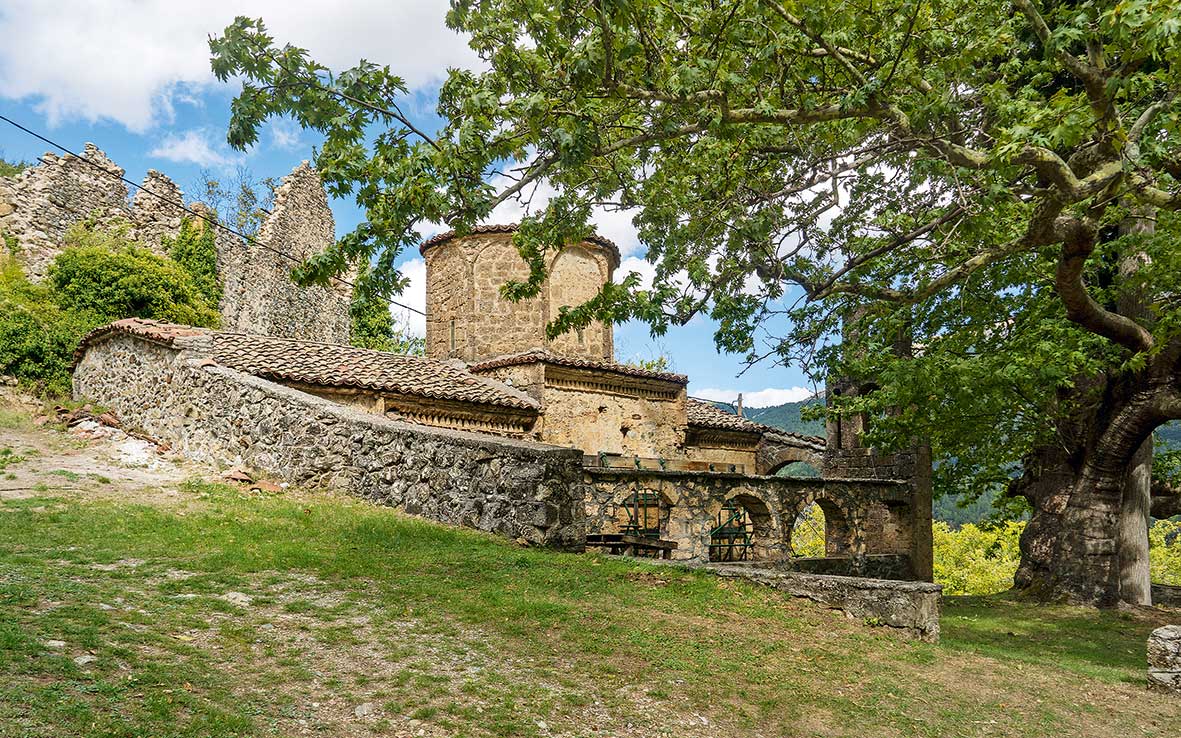
© Perikles Merakos
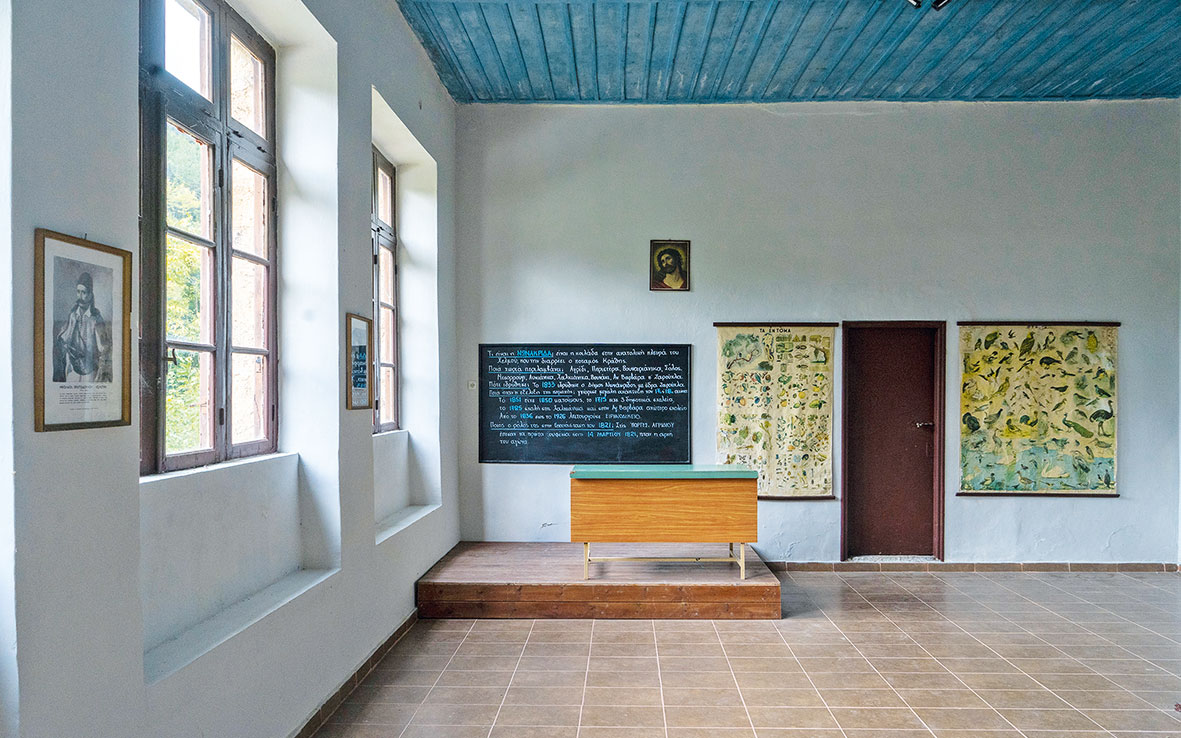
© Perikles Merakos
High on the mountain stands the church of Aghia Paraskevi, the only point with such easy access, which offers a panoramic view of the village, whether in the morning with the forest wrapping the village like a ribbon or in the afternoon, with the colors of the sunset falling on the stone houses.
Walk uphill to Aghia Triada, an easy half-hour route either through the forest path or by taking the paved road, to see one of the oldest and most important Byzantine churches in the Peloponnese, dating back to the late 17th century. According to one version, the church was the catholicon of a monastery that was abandoned, while according to another, it was a private church belonging to a family that lived in the adjacent tower. Its interior is decorated with beautiful frescoes created by local iconographers, however today, due to serious structural problems, it cannot be visited. In the surrounding area, a huge plane tree covers almost the entire plateau, offering its shadow to the hikers, while on one of its branches there is a simple swing, made with rope that will awaken your childhood carelessness.
On your way back to the settlement, be sure to stop at the old primary school of Zarouchla, which has been turned into a Folklore Museum, where you will discover the history of Nonakrida.
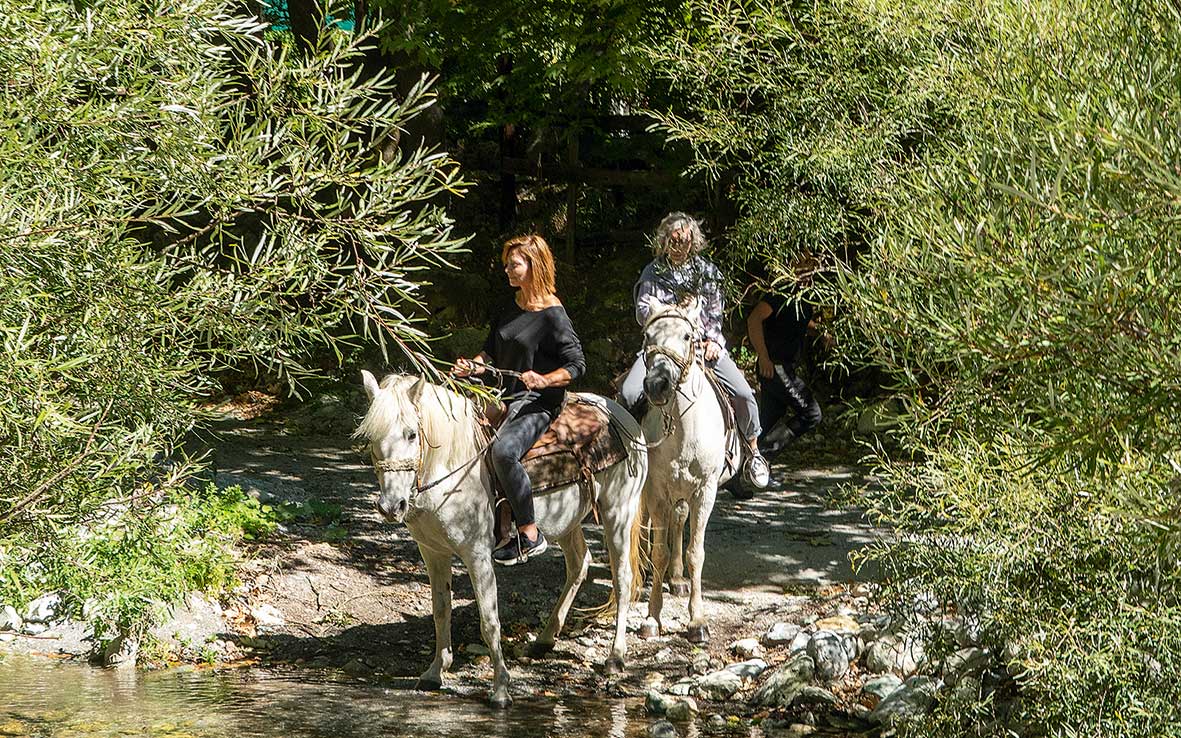
© Perikles Merakos
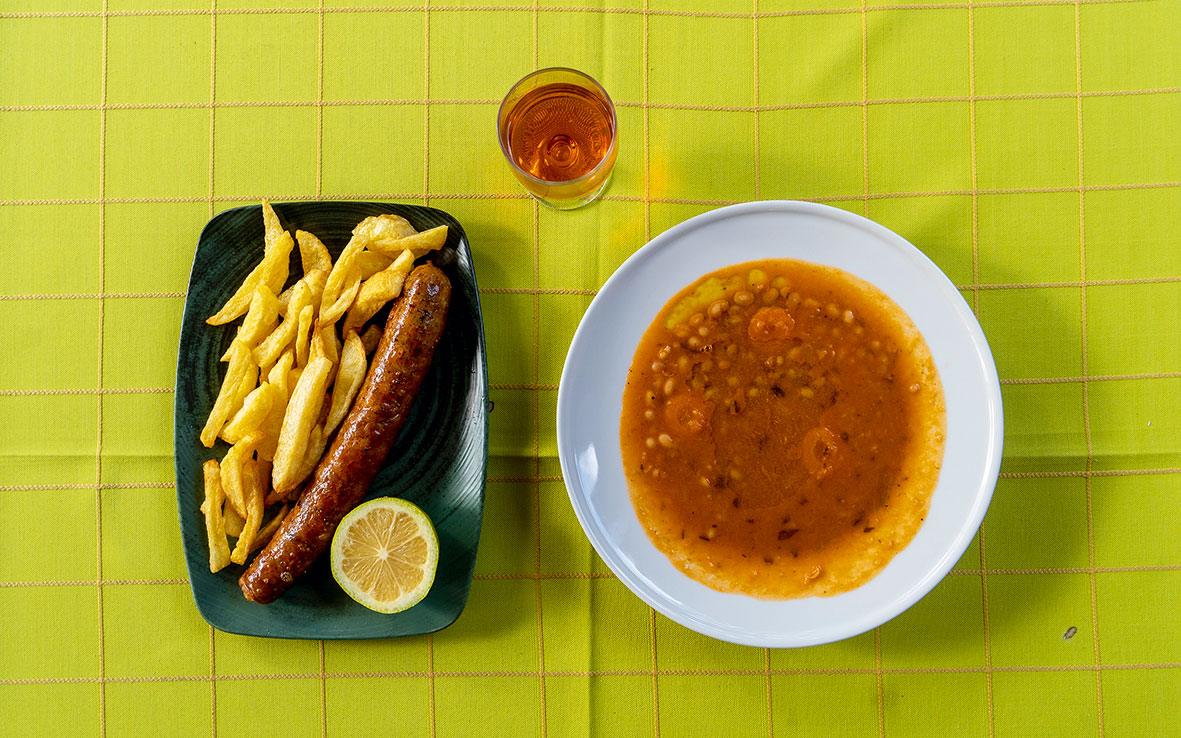
© Perikles Merakos
Food & other things to do
If you want to try something other than forest walks, contact Tasos Mastrokoukos (Tel. (+30) 6944.357.291) to take a short guided tour on horseback. You will follow a circular path that crosses Krathis river, through dense vegetation, comes out on a plateau, crosses the river again and returns to the starting point of the route ̶ the experience is also aimed at those who have never ridden before.
At Mahaeras, Giorgos and Katerina prepare daily stews, salads and meats that will tempt you into… excesses ̶ they themselves will however warn you. We tried Katerina’s “Ferrari,” the salad with fresh vegetables, beetroot, walnuts and a fragrant sauce, lamb sausage, white bean soup, burgers and apple preserve. Everything was delicious. For coffee and drinks there are two options, the jazz café-bar Sto Rema (Tel. (+30) 26960.340.39), where you can have tsipouro or coffee while listening to the water flowing before you, and Agora (Tel. (+30) 6986.867.964) on the cobbled street, that serves homemade sweets, coffee, etc. Alternatively, you can sit in the garden of Stis Elenas Hotel (Tel. (+30) 26960.350.83) and if you are lucky, you might catch one of the musical events organized by Andreas and Katerina featuring small bands.
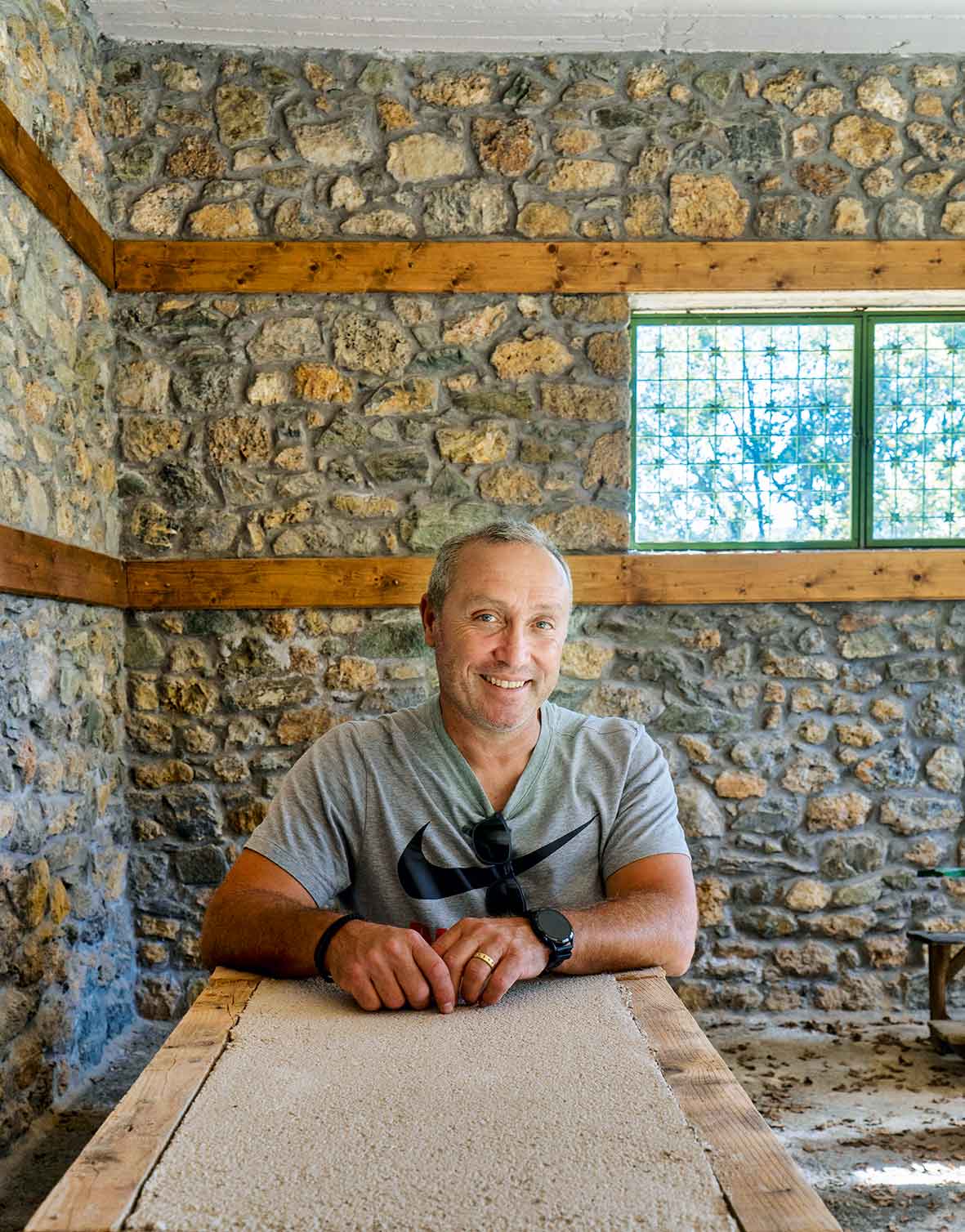
© Perikles Merakos
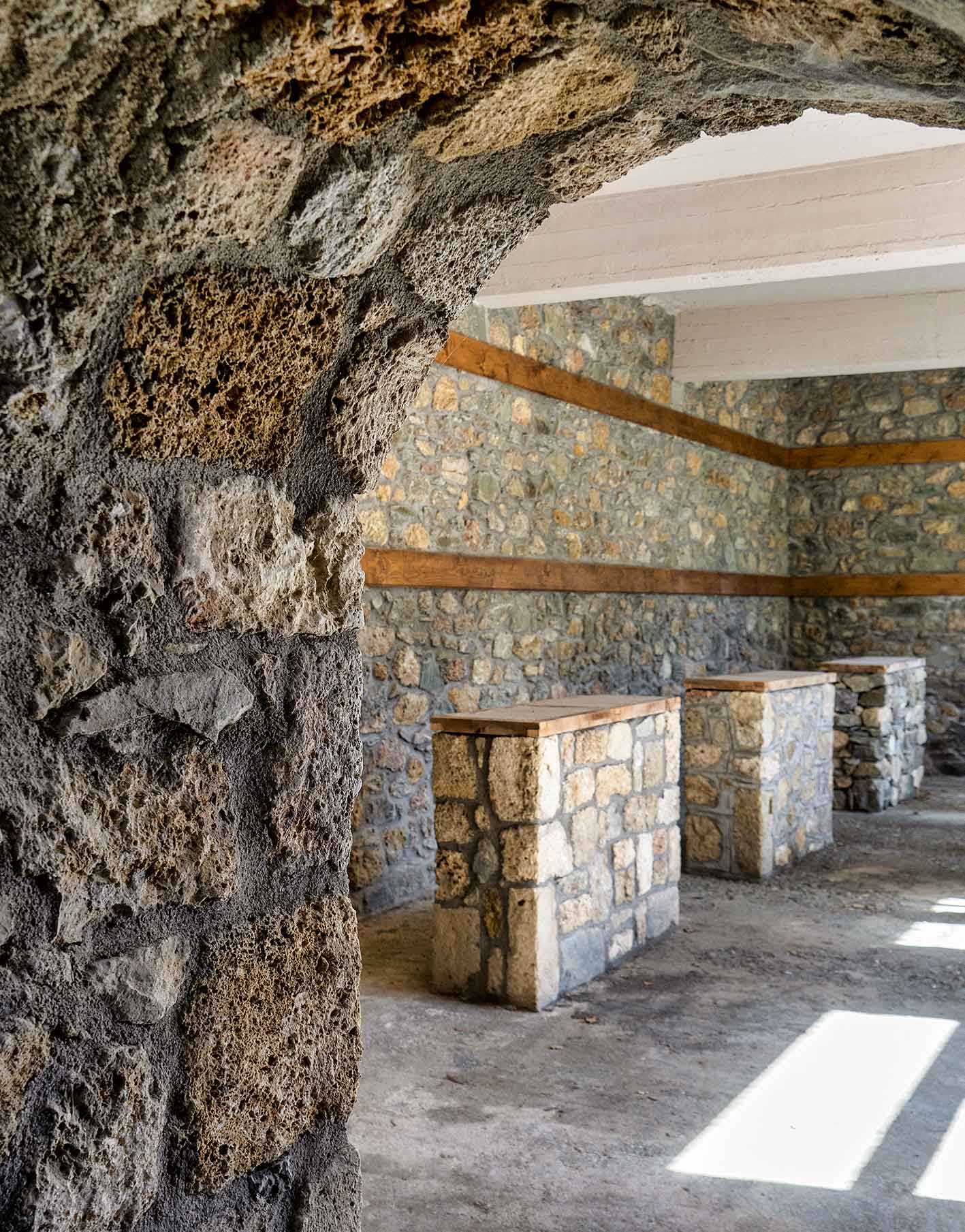
© Perikles Merakos
Aghia Varvara, the village of stone masons
Aghia Varvara is just one kilometer from Zarouchla. This is a village of master stone masons, who used to form working groups and travel throughout Greece, therefore samples of their work can be found in Nea Epidaurus and Poros. Today, the quiet stone-built village with its surviving tower-houses and beautiful cobbled streets is an undeniable testament to their craftmanship. Among them stands out the tower of Theocharopoulos, one of the leaders of the Greek Revolution and right next to it one more that belongs to the family of doctor Christos Argyriadis. The community has started the creation of a museum, dedicated to the four types of stone masonry (mortared, polygonal, coursed random and dry stone technique) mastered by the stone masons from Aghia Varvara, who were equally competent with the masters from Epirus, Lagadia and Mani. The museum’s interior is almost complete, while traditional construction samples will complement the various tools used by the builders and will be exhibited in the hall (the museum will open its doors to the public in the summer of 2023).
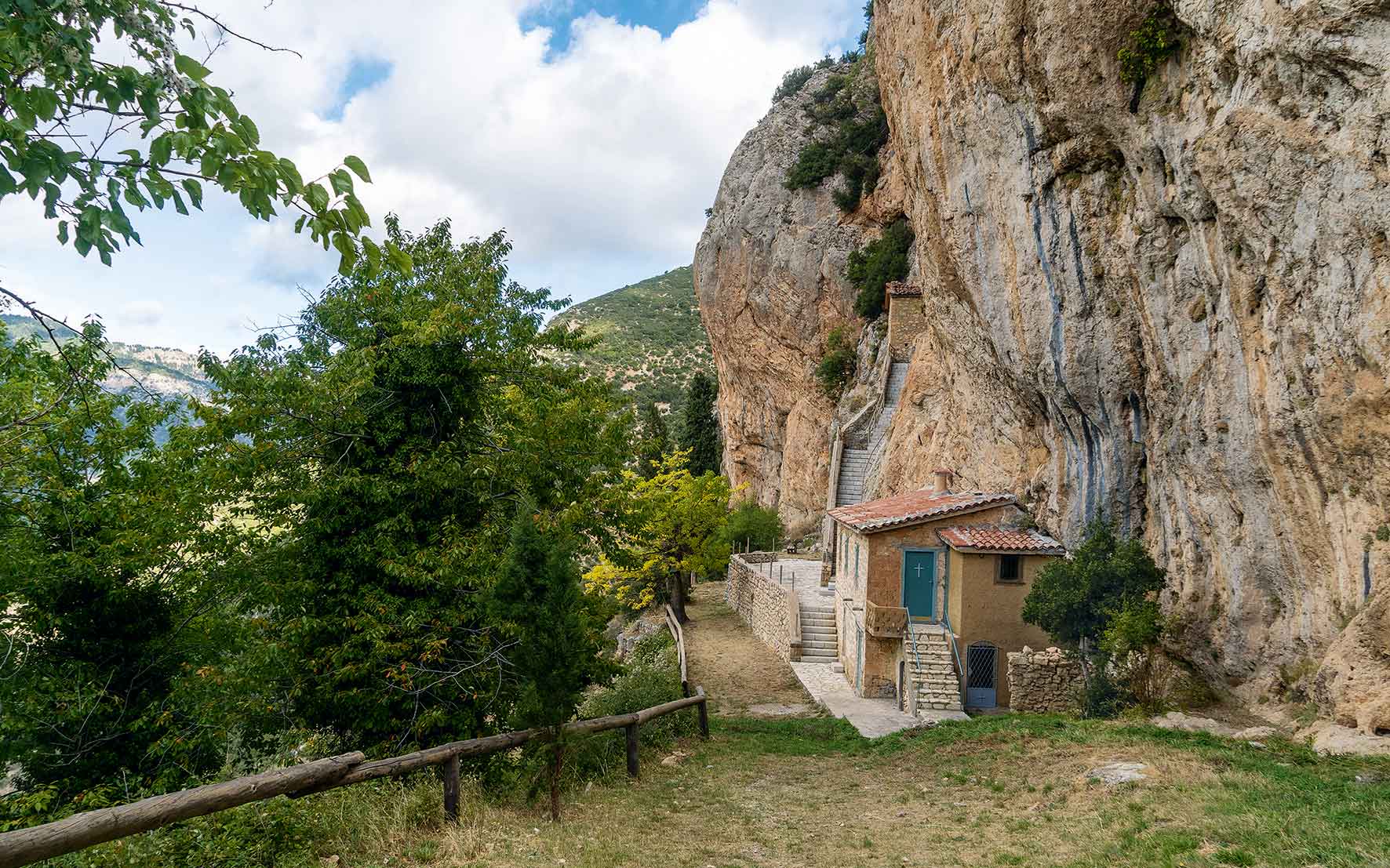
© Perikles Merakos
Halkianika, in the shadow of the rocks
Crossing the village, we continued to Halkianika, whose stone houses are mostly newer constructions. From here we went up to Panaghia Katafugiotissa (1638), to admire the view of the opposite villages of Peristera, Mesorrougi and Solos. The rocks above the church are full of caves ‒ where the inhabitants fled to escape first from the pirates and then from the Turks. Kolokotronis had even instructed his soldiers not to disturb the families who lived there. On the same rocks he himself protected the family he had created with Margarita Velissaropoulou, nun of the monastery and mother of his youngest son, Panagiotis.
The idea of a woman who breaks her bonds and follows the Old Man of Morias but also the events of the Greek Revolution themselves, inspired the author Anastasia Efstathiou to write the book “Eight Sounds for Margarita.” The story that Efstathiou told us about the great love of the pre-eminent leader of the Greek War of Independence was really sweet but before we left Halkianika, we also stopped by Ariadni’s confectionery to get home-made jams and fruit preserves. We watched her grind trahanas and made an appointment with her the next morning at her shop, at the entrance of Zarouchla (Ariadni, Tel. (+30) 6976.883.991), to buy local products (cheeses, honey, herbs, etc.) along with other traditional but also more modern types of pasta that she makes, such as orzo with vegetables.
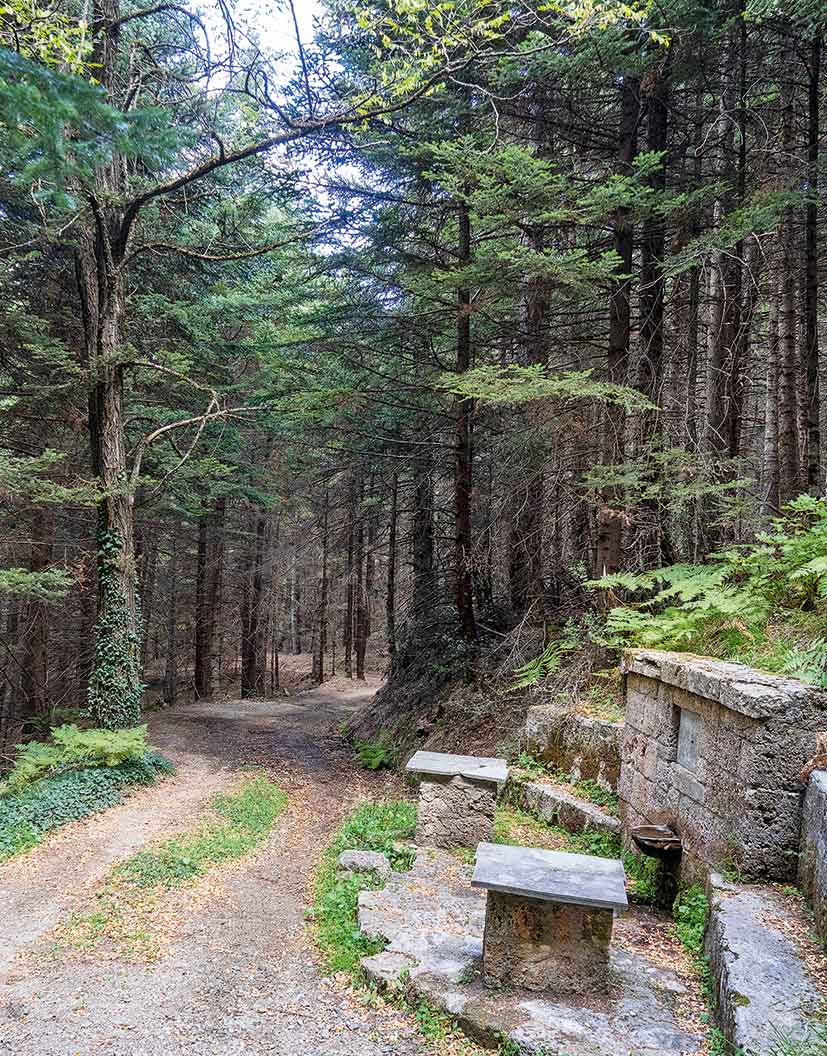
© Perikles Merakos
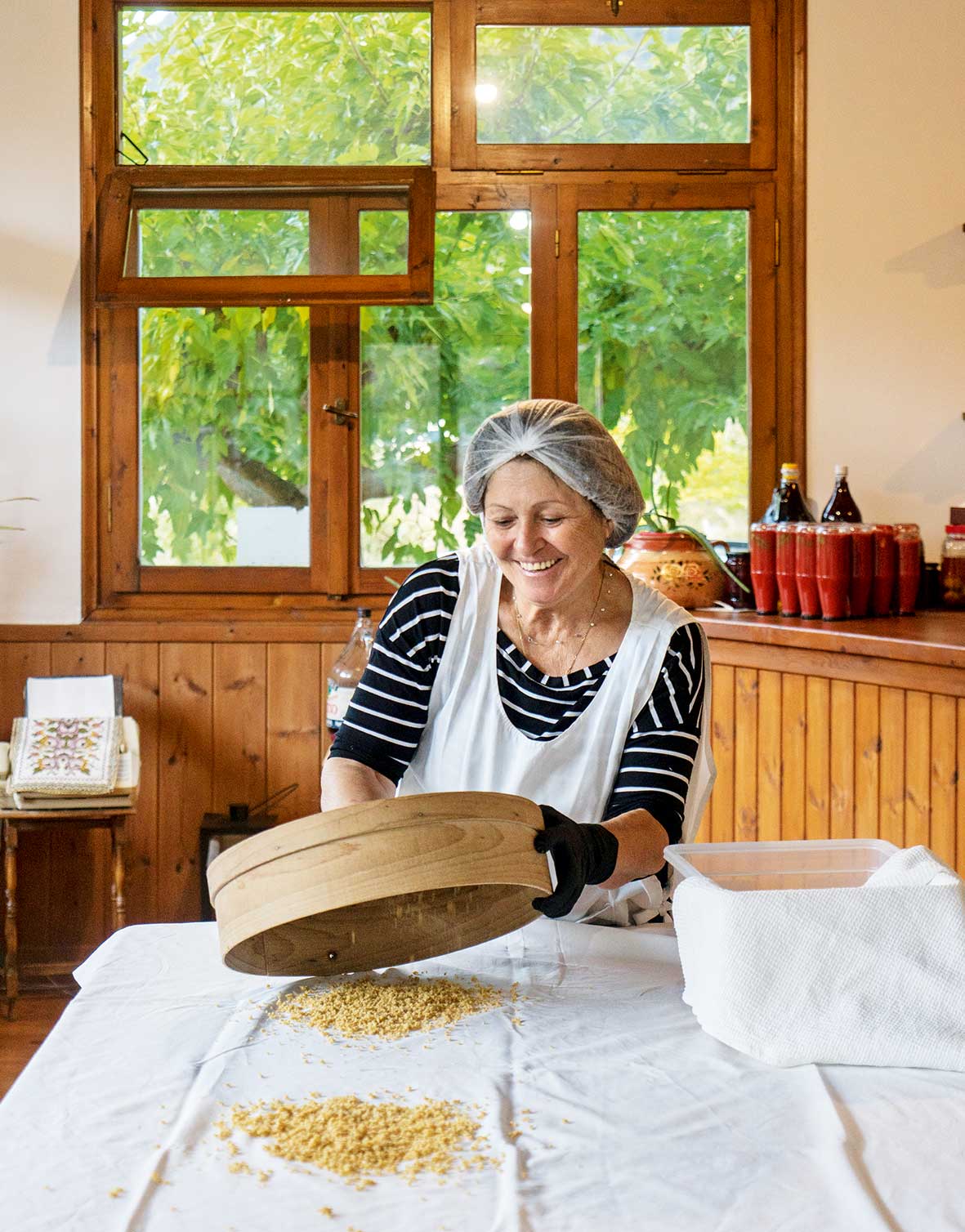
© Perikles Merakos
Solos, Golfo and Aghios Georgios
“Love is a sea and if you yearn for its beauties and spread your sails, it is not easy to turn back, mother. Love is a murder that leaves you alive. Love is to love your open wounds. Love is talking to leaves and trees, stones and roses… Ah, this is love…» said the betrayed Golfo, while wandering in the mountains, after losing the love of Tasos. The fountain described by the author Spyridon Peresiadis in his play “Golfos” is located just outside the village of Solos and is still one of the most famous landmarks in the area.
But Solos is not only the Fountain of Golfo, nor the glorious Kastraki, where 2,500 Greeks died to stop Ibrahim on May 5, 1826. The church of Aghios Georgios dominates the quiet settlement, which once had 3,000 inhabitants. In the church, which dates back to 1806, we are guided by George Zidropoulos, a permanent resident of the village. “Thank God, a few people visit us on weekends and we exchange a few words” he tells us and begins to narrate: “Nikolaos Christodoulou (or Soliotis, one of the leaders of the Greek Revolution and lord of the village) in 1806 sent his wife with florins to the Pasha of Aegio to get his permission to build the church.
The work started in May, because they had to wait for the snow to melt, since they needed to carry tufa from Helmos. Women and animals were carrying stones all day long and men were shaping them and building the church. “The pine tree enjoys the coolness, love enjoys the snow and Xerokampos enjoys the girls from Kloukinohoria” they were singing. As Mr. Giorgos explains, the design of the church is very rare, with the entire church being “under an arch.” Its wood-carved iconostasis also has its own story: it took seven years to carve it and it still stands beautiful today. The icons of the Virgin Mary and Christ, however, were not spared by Ibrahim ̶ he burned down the village and, entering the church, carved the faces of the icons with his sword. Opposite Aghios Georgios dominates the four-story tower of Soliotis with its iron doors, its thermistra (a construction that was used to throw hot oil or water on attackers) and its battlements for 16 firelocks.
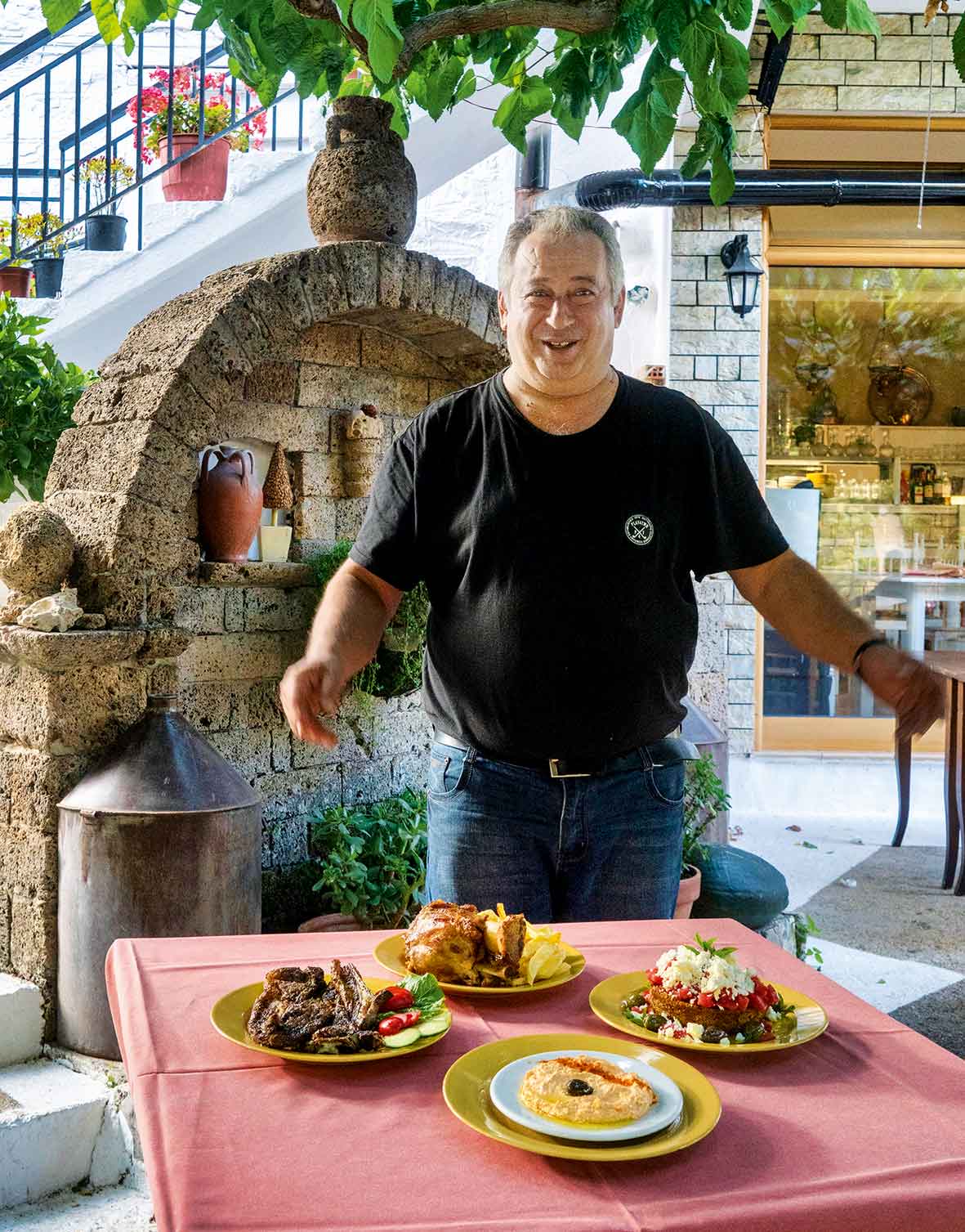
© Perikles Merakos
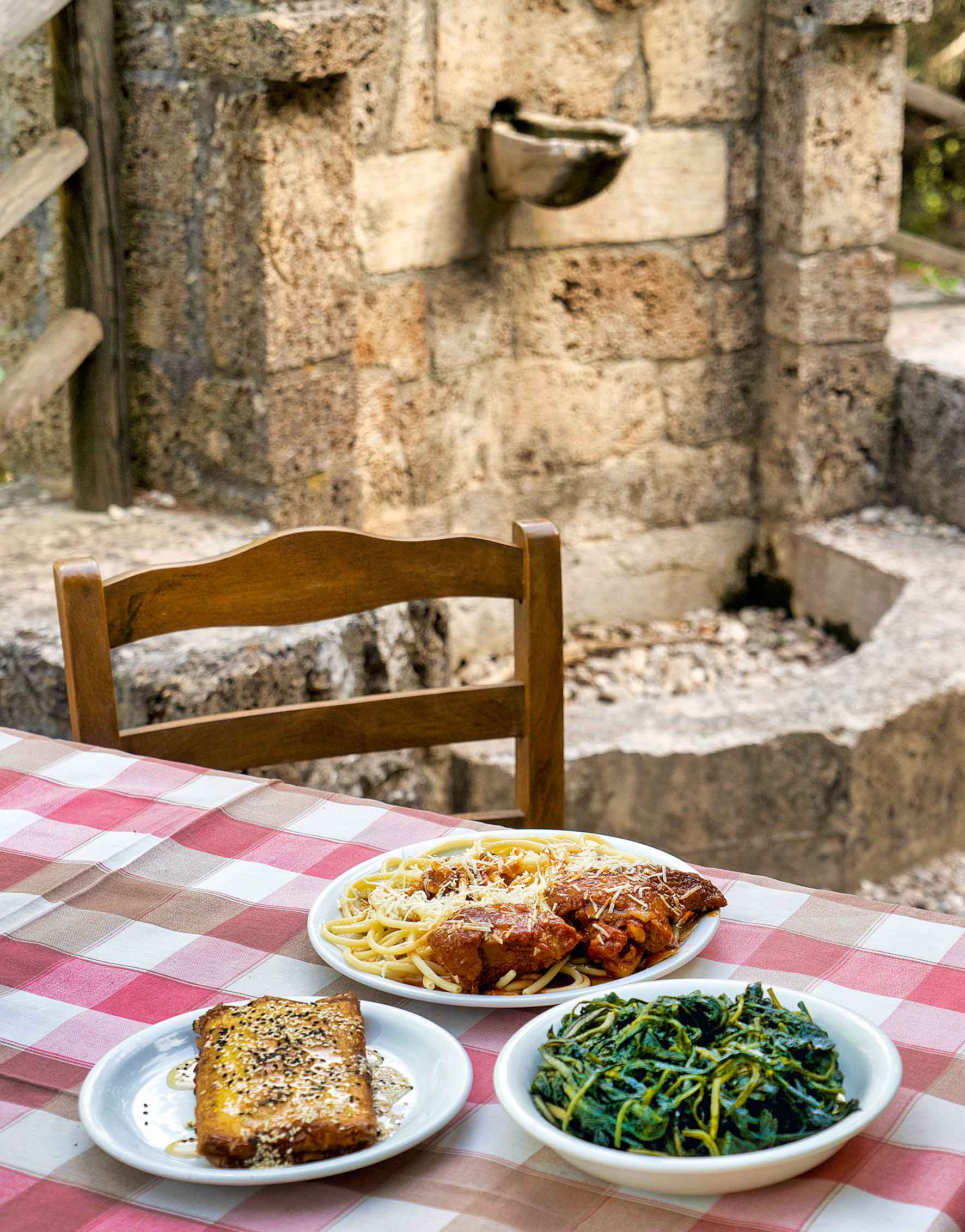
© Perikles Merakos
Food
After the walk to Solos, we tried Ms. Christina’s excellent cuisine at Niriides Taverna (Tel. (+30) 26960.339.91). In addition to grilled meats, we also tried fresh boiled greens, beef cooked in lemon sauce and mushrooms picked by her son, Spilios, who suggested that we pair our meal with Ora lager beer by Patraiki Brewery. We finished the meal with some raspberry preserve served on yogurt.
In Mesorrougi to visit Dinos
The village, on the north-eastern slopes of Aroania, is the birthplace of Spyridon Peresiadis and the author’s father’s house is still here. What brings us here today are the exquisite dishes served by Dinos and Adamantia (Matoula) in their taverna (Dinos, Tel. (+30) 26960.330.94). This couple gained experience working in a well-known Athenian hangout and then, they decided to return to their place of origin, when their children were still young. White beans soup, lachanontolmas (stuffed cabbage rolls, filled with minced pork mixed with rice), rooster in tomato sauce, trachanas (a type of fermented cracked wheat), handmade pies and salads, everything was delicious and in generous portions.
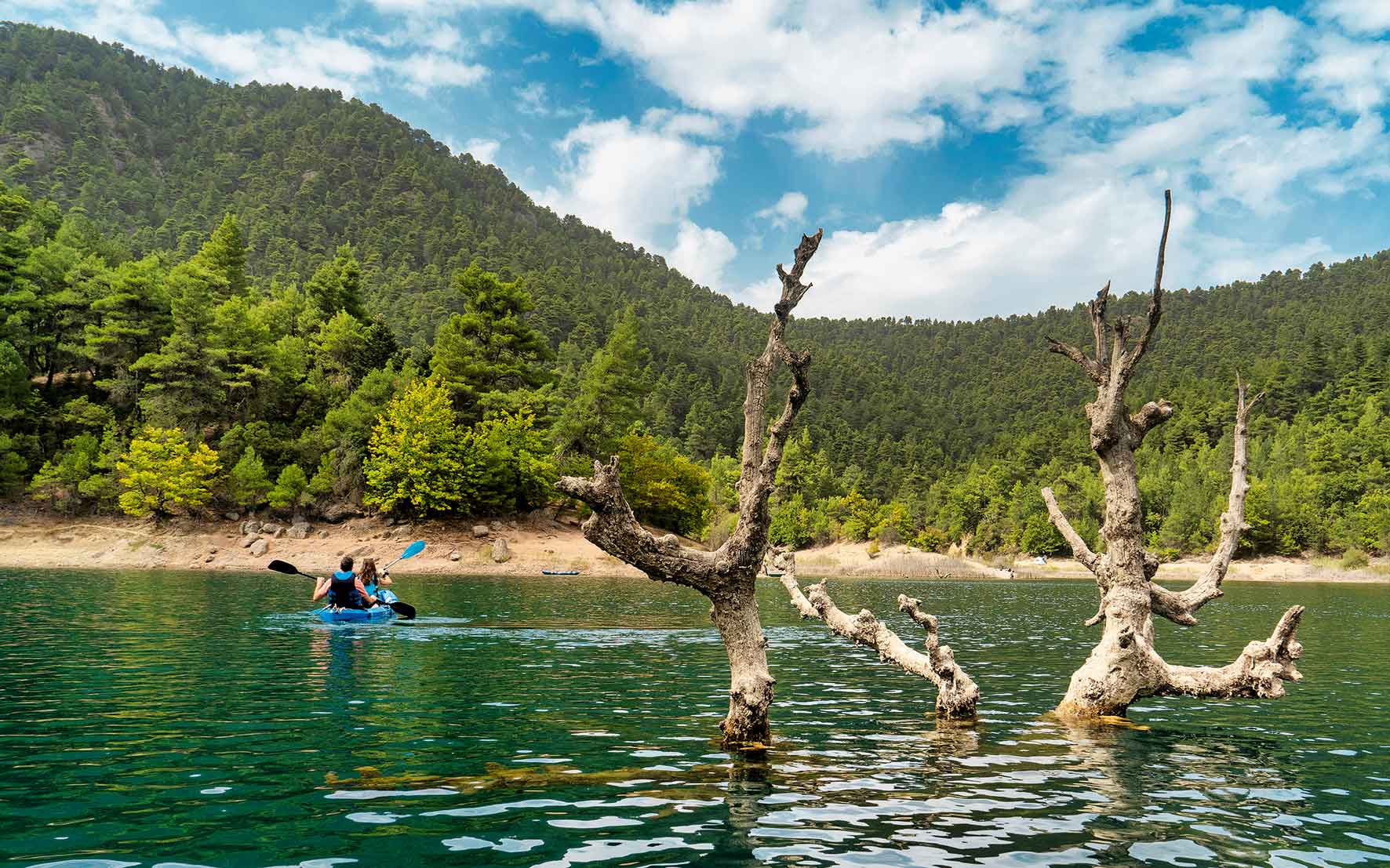
© Perikles Merakos
Tsivlos Lake
With an area of 8.3 hectares and a maximum depth of 75m, it was created in 1913 by a landslide that carried away and destroyed the village of Sylivaena and flattened the village of Tsivlos. Around it grows a rich forest with aleppo pines, black pines and Greek firs, while its banks are surrounded by willow trees, poplars and plane trees, which are considered of great importance for its stability. It is 14km from Zarouchla and 25km from Akrata. It is part of the Helmos Vouraikos UNESCO Global Geopark network and as an important wetland it is a protected area, so only mild activities are allowed.
Food and things to do
Its calm waters are ideal for paddling (Trekking Hellas Achaea, Tel. (+30) 6942.010.853, canoe for two people 25 euros/hour). You can also walk, run or cycle around the lake. Furthermore, you can have a go at archery (10 euros/30 minutes) or try your luck at fishing, as the lake is full of chubs, carp, trout, crayfish, etc. The area is also ideal for bird watching, with kingfishers, gray herons, little grebes, great tits, woodpeckers, etc. being the most common species.
When you are done with the activities, you can visit Paradisos Taverna (Tel. (+30) 6975.833.582) to enjoy rooster ̶ bred by the owners ̶ in tomato sauce with spaghetti, meatballs, beef in lemon sauce with potatoes, pork chops, boiled greens and fruit preserves. Another alternative and an excellent choice is To Petrino Taverna (Tel. (+30) 26960.341.90) to taste home-cooked local stewed and grilled meats.

